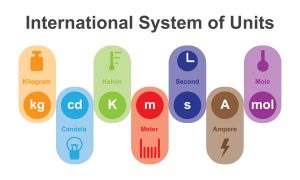Religion is a system of worship and faith centered around a superhuman power or Gods that control the Earth. While different religions bring millions of people together, there’s also a growing number of people who are atheists or non-believers in a higher power.
Overall, around 85% of the world population is religious, while about 15% are non-religious. The most popular religions globally are Christianity, Islam, Hinduism, and Buddhism.
Let’s take a closer look at the most common religions around the world.
Table of Contents
What percentage of the world population is Christian?
Christianity is the most widely followed religion in the world, with 31.2% of people subscribing to this faith based on Jesus of Nazareth and his teachings. There are around 2.6 billion Christians making up one-third of the total world population, with this faith comprising a majority of believers in 157 different countries.
There are multiple denominations within the Christian religion, with beliefs varying slightly based on which kind of Christianity the group believes in. For example, Catholic Christians are largely considered to be more strict in their beliefs than Evangelical Lutherans, who tend to have more open-minded views.
There’s a long list of Christian denominations, and here are the top groups with the total number of followers.
- Catholicism – 1.345 billion (including 18 million independent Catholics)
- Protestantism – 900 million to 1 billion
- Eastern Orthodox – 220 million
- Oriental Orthodox – 62 million
- Nontrinitarianism – 35 million
- Church of the East – 600,000
What percentage of the world population is Protestant?
Protestantism is one of the most popular denominations of Christianity, with between 900 million and 1 billion followers. Originally, Protestantism began as a rejection to perceived errors and abuses in the Catholic Church. It dates back to the 1500s and is widely followed throughout North America and Europe today.
Within Protestantism, about half of all believers fall into historical denominations such as Anglicanism (110 million), Baptist (100 million), Lutheranism (70-90 million), Calvinism and Methodism (both 60-80 million), or Adventism (22.3 million). Restorationism, Anabaptism, Plymouth Brethren, Hussites, and Quakers are less common but still have hundreds of thousands if not millions of followers globally.
There’s also modern Protestantism accounting for another 400 to 500 million believers. Of those, 280 million belong to Pentecostalism and 80 to 100 million fall into nondenominational Christianity. African churches account for 60 million believers while Chinese Patriotic Christian churches have another 25 million. Eastern Protestant Christianity has 22 million members and the New Apostolic Church has 10 million.
What percentage of the world population follows Islam?
Islam is the next most popular religion behind Christianity, with 24.1% of the world’s population belonging to the Islamic religious group. That means over 2 billion people globally follow Islam, which is an Abrahamic monotheistic belief system focused on the religious text of the Quran.
Muslims are believers of Islam and may be broken down into different schools and branches, much like Christianity. Sunni Islam or Sunnism is the largest of all Islamic denominations, although Shia, Ibadi, and Quran have millions of followers, too.
Here’s a breakdown of Islam by country, with the number of Muslims and the Islamic percentage of the nation’s total population.
- Indonesia – 231 million – 86.7%
- Pakistan – 212 million – 96.5%
- India – 200 million – 14.6%
- Bangladesh – 151 million – 91%
- Nigeria – 95 million – 48.5%
- Egypt – 85 million – 90%
- Iran – 82.5 million – 99.4%
- Turkey – 74 million – 84.3%
- Algeria – 40.2 million – 97.7%
- Afghanistan – 37.25 million – 99.7%
What percentage of the world population follows Hinduism?
Hinduism accounts for about 15% of the global population. It’s often referred to as the oldest religion in the world, largely concentrated in India and Nepal, although it’s spread around the globe with 1.2 to 1.35 billion total followers.
Like other religions, Hinduism also has different groups within the overarching belief system, including Vaishnavism, Shaivism, Shaktism, Neo-Hinduism, and Reform Hinduism.
To give you a greater idea of Hinduism and its global presence, this list details the countries with the highest proportion of Hindus:
- Nepal – 81.3%
- India – 79.8%
- Mauritius – 48.5%
- Guyana – 28.4%
- Fiji – 27.9%
- Bhutan – 22.6%
- Suriname – 22.3%
- Trinidad and Tobago – 18.2%
- Qatar – 13.8%
- Sri Lanka – 12.6%
Overall, around 1.1 billion Indians are Hindus, while about 28.6 million Hindus live in Nepal. Bangladesh has 13.7 million Hindus, with four million more in both Indonesia and Pakistan. The United States, Malaysia, United Kingdom, Sri Lanka, and Mynamar also account for millions more Hindus across the world.
How common is Buddhism?

Buddhism is an ancient Indian religion or philosophy and the fourth-largest religious group in the world. Around 506 million people practice Buddhism, making up 6.6% of the global population.
China is the largest country for Buddhism with 244 million or 18% of its people belonging to this religion. For the most part, these believers follow the Chinese schools of Mahayana, which is the biggest body of Buddhist practices and traditions. Mahayana is also widely followed in East Asia with over 50% of world Buddhists partaking in these practices.
The following nations lead the way in Buddhism, including the total number of followers and the proportion of the national population:
- China – 244 million – 18%
- Thailand – 64 million – 93%
- Japan – 46 million – 36%
- Burma – 38 million – 80%
- Sri Lanka – 14.5 million – 70%
- Cambodia – 13.7 million – 97%
- India – 8 million – 0.8%
- Taiwan – 5 million – 21%
- Laos – 4 million – 66%
- Singapore – 1.7 million – 33%
What are less common religions?
Christianity, Islam, Hinduism, and Buddhism are the most common and widely followed religions around the world, although there are many minor religions that still have millions of followers worldwide. These belief systems usually branch off from existing religious groups.
Here are some of the minor religions practiced in different parts of the globe:
- Sikhism (Hindu-Islam fusion, 30 million followers)
- Judaism (14 million followers)
- Mormonism (offshoot of Christianity, 10 million followers)
- Baha’ism (6 million followers)
- Jainism (offshoot of Hinduism, 4 million followers)

















